Ceiling-Mounted Jib Cranes: When Floor Space is Limited
In industrial settings where space comes at a premium, companies are seeking innovative ways to manage material handling efficiently without sacrificing floor real estate.
One highly effective solution is the ceiling-mounted jib crane. Part of the broader family of jib cranes, this type is engineered for environments where floor-mounted lifting solutions are not viable or would interfere with other operations.
This article explores the structure, functionality, and benefits of ceiling-mounted jib cranes and how they compare with other common types like freestanding jib cranes, wall mounted jib cranes, and articulating jib cranes.
To explore the full selection of Jib Crane solutions, Aardwolf offers industry-grade lifting equipment designed for flexibility and performance.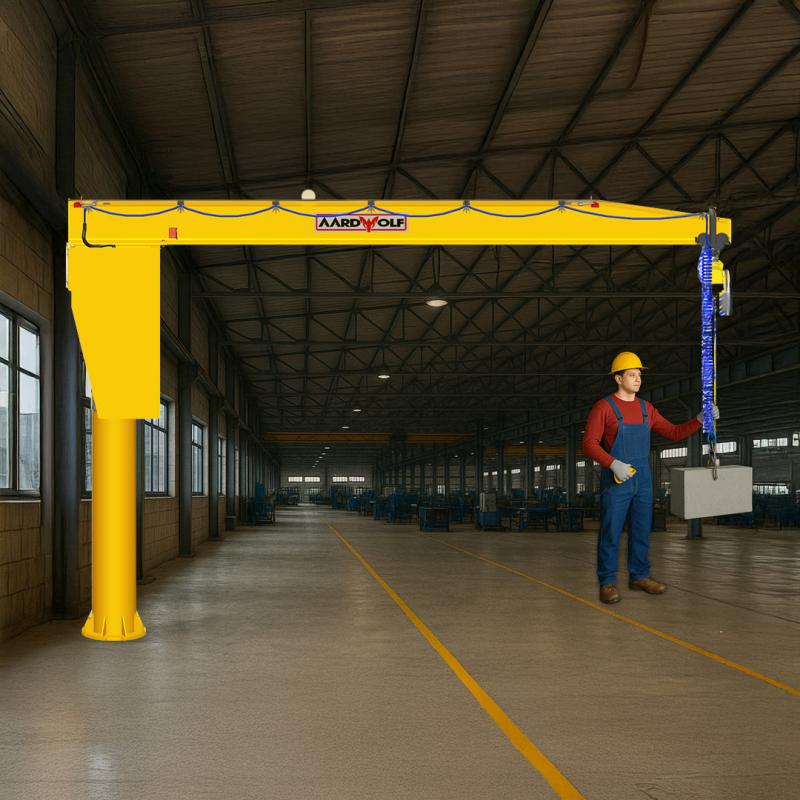
What Is a Ceiling-Mounted Jib Crane?
A ceiling-mounted jib crane is a space-efficient lifting device that attaches to an existing overhead structural beam or truss. Unlike freestanding or pillar jib cranes, this design eliminates the need for floor or wall supports entirely, offering full lifting coverage while leaving floor space completely unobstructed.
Commonly used in production lines, cleanrooms, and repair shops, ceiling-mounted jib cranes are ideal for transporting loads across a defined arc—typically up to 360 degrees depending on the mounting configuration and clearance.
If you're unsure about the structural differences between crane types, this guide can help: Difference between crane and a jib crane
Key Features of Ceiling-Mounted Jib Cranes
1. Floor Space Conservation
The primary advantage of ceiling-mounted jib cranes is their zero floor footprint. By leveraging existing ceiling structures, these cranes support workflows without blocking aisles, walkways, or equipment paths.
This is particularly beneficial in:
· Lean manufacturing setups
· Tightly packed production cells
· Warehouses with racking systems
2. Enhanced Mobility and Coverage
Depending on the structural layout and mounting position, ceiling-mounted jib cranes can provide 180° to full 360° rotation, enabling dynamic coverage for multi-bay operations. They can also be integrated into monorail or bridge crane systems for extended load travel.
3. Lightweight and Modular Design
Many ceiling-mounted models are built with high-strength, low-weight steel or aluminum components, making them easier to install and adjust as operational needs evolve.
4. Compatibility With Electric or Manual Hoists
Whether you're working with electric chain hoists, vacuum lifters, or mechanical trolleys, ceiling-mounted jib cranes support all types of lifting mechanisms—making them versatile for various industries.
When to Choose a Ceiling-Mounted Jib Crane
Ceiling-mounted jib cranes are an excellent option when:
Floor space is limited or needed for other machinery
Work areas are already reinforced with overhead beams or trusses
Overhead crane systems are unavailable or cost-prohibitive
You need localized lifting within a specific workstation
You are retrofitting material handling into an existing production line
Compared with other jib cranes, ceiling-mounted versions offer the cleanest layout while maintaining ergonomic and efficient lifting capabilities.
Explore a range of jib crane types to see how ceiling-mounted models compare to wall-mounted, freestanding, and articulating versions.
Ceiling-Mounted vs. Other Jib Crane Types
To choose the right system, it’s crucial to understand how ceiling-mounted cranes compare to other popular options:
|
Common Applications for Ceiling-Mounted Jib Cranes
Assembly Stations
In fast-paced manufacturing environments, ceiling-mounted jib cranes allow workers to lift parts or tools without interrupting workflow or blocking machinery movement.
Cleanrooms & Laboratories
Since these cranes don’t touch the floor, they’re ideal for environments with contamination control protocols—such as pharmaceutical and electronics manufacturing.
Aerospace and Automotive
In production lines or maintenance bays, ceiling-mounted jibs help technicians lift engines, doors, or precision parts without requiring bulky ground support.
Warehouses and Distribution Centers
Where floor-mounted systems might interfere with racking or forklifts, ceiling-mounted solutions offer efficient material handling above ground level.
Installation Considerations
Before installing a ceiling-mounted jib crane, it’s important to evaluate:
Ceiling Structure Integrity:
Must be engineered to bear both vertical and torsional loads
Clear Height Requirements:
Ensure enough vertical space between the crane and any overhead obstructions like HVAC systems or lighting
Load Path and Coverage:
Plan for full boom sweep and trolley travel without interference.
For step-by-step instructions, Aardwolf provides a helpful technical guide: Prepare a jib crane step by step
Advantages of Ceiling-Mounted Jib Cranes
Total Floor Clearance
Keep aisles, workbenches, and access routes free by shifting lifting operations overhead.
Cost-Effective for Specific Zones
Installing a ceiling-mounted jib crane is typically more affordable than installing an entire overhead crane system—especially for localized operations.
Seamless Integration
They can be installed over workbenches, production lines, or between machines without disrupting existing layouts.
Potential Limitations
Despite their many advantages, ceiling-mounted jib cranes may not be the best fit for every facility:
Structural Requirements: In older buildings, ceiling trusses may need reinforcement or modification.
Permanent Placement: Once installed, relocating the crane can be more complex compared to mobile solutions.
Limited Load Capacities: They are not suitable for extremely heavy loads like some pillar jib cranes or gantry cranes can manage.
Complementary Jib Crane Options
In many facilities, ceiling-mounted cranes are paired with other lifting systems to support broader workflows:
Use a wall mounted jib crane for secondary lifting zones
Install a freestanding jib crane in outdoor or central locations
Add an articulating jib crane for tight, maneuverable lifting around machinery
All of these options and more are part of Aardwolf’s full line of Jib Crane solutions.
Final Thoughts
If you're looking for a material handling solution that maximizes floor space, enhances workflow, and minimizes installation disruption, a ceiling-mounted jib crane is a smart, scalable investment. These cranes deliver ergonomic, efficient lifting with a clean and open layout—making them perfect for modern manufacturing, warehousing, and assembly environments.
Before you commit, explore a range of jib crane types and consult structural engineers to confirm your facility's suitability.
Need help designing or integrating a ceiling-mounted jib crane into your facility?
Visit Jib Crane solutions to explore models, specifications, and expert installation support.
References
1. How to operate a Jib Cranes safely
3. Over brace jib crane wall mounted
5. Is a Jib Crane a Gantry Crane
6. Articulated Jib Crane Wall Mounted
8. Manual Counterbalance Crane
10. Over Braced Jib Crane Column Mounted





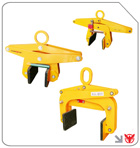
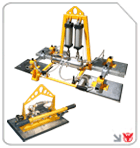
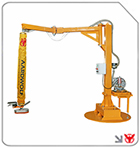
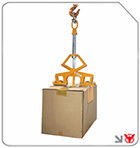
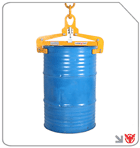
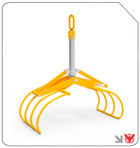
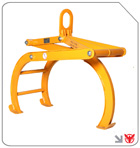
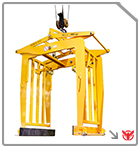
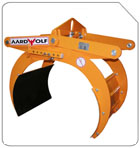
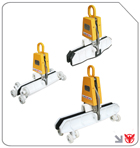
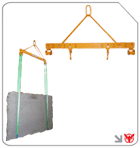
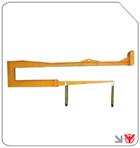
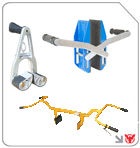
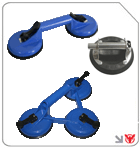

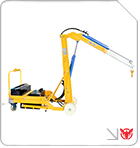
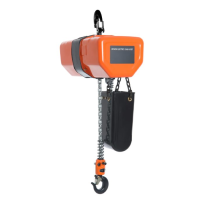
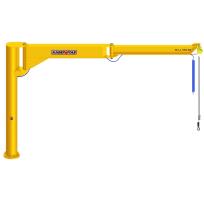
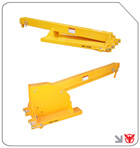
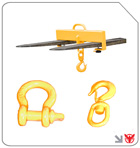
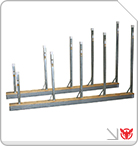
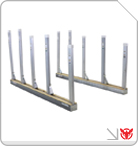
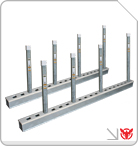
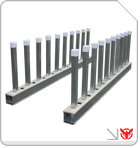
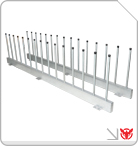
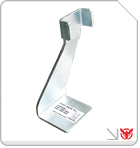
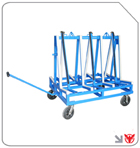
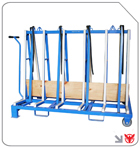
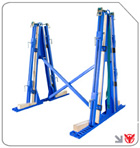
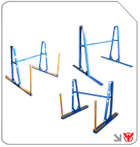
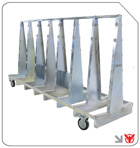
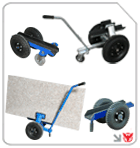
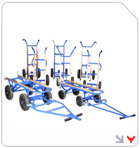
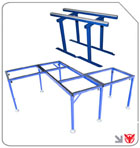
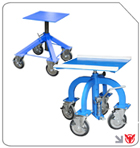
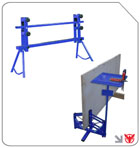
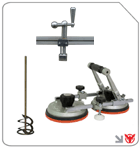

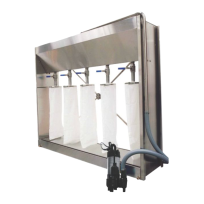
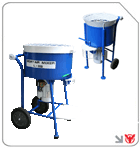
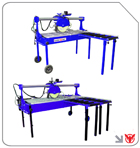
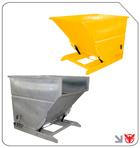


Follow us on: